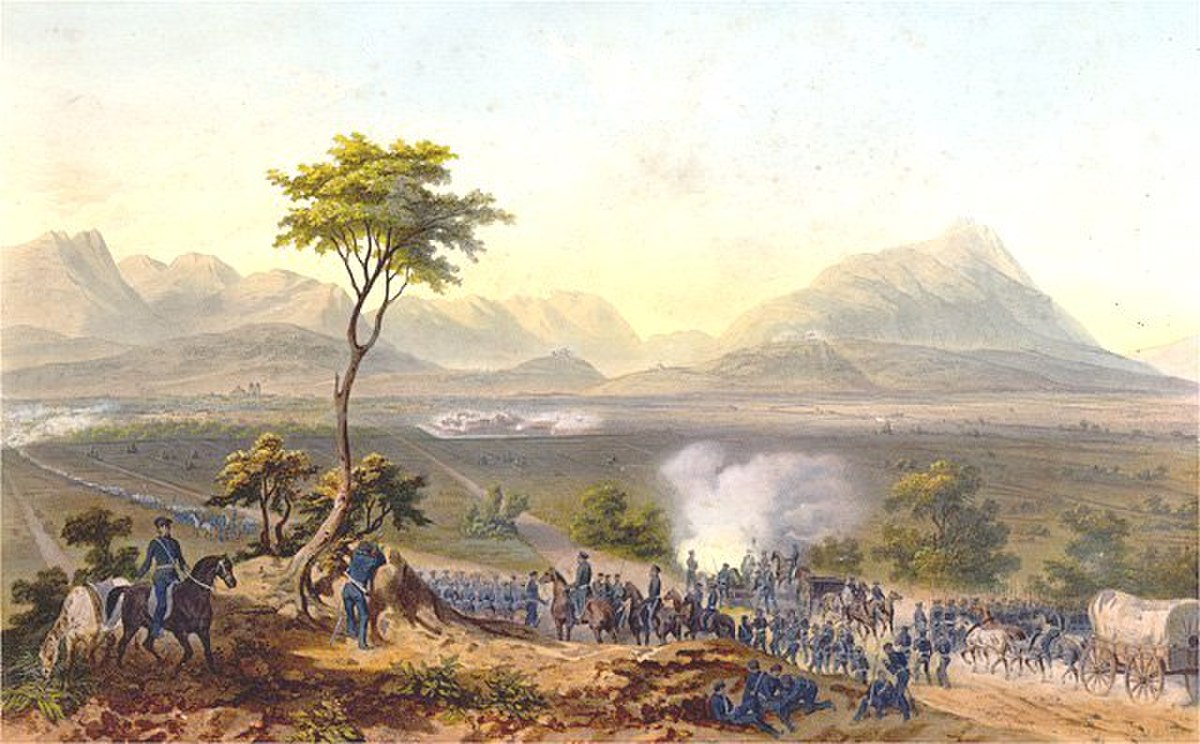
Battle of Monterrey
Monterrey, Nuevo Leon, MexicoFollowing the Battle of Resaca de la Palma, General Zachary Taylor with a force of United States Regulars, Volunteers and Texas Rangers crossed the Rio Grande on 18 May, while in early June, Mariano Arista turned over command of what remained of his army to Francisco Mejia, who led them to Monterrey. On 8 June, United States Secretary of War William L. Marcy ordered Taylor to continue command of operations in northern Mexico, suggested taking Monterrey, and defined his objective to "dispose the enemy to desire an end to the war."
In early July, General Tomas Requena garrisoned Monterrey with 1,800 men, with the remnants of Arista's army and additional forces from Mexico City arriving by the end of August such that the Mexican forces totaled 7,303 men. General Pedro de Ampudia received orders from Antonio López de Santa Anna to retreat further to the city of Saltillo, where Ampudia was to establish a defensive line, but Ampudia disagreed, sensing glory if he could stop Taylor's advance. Ampudia's forces included a largely Irish-American volunteers called San Patricios (or the Saint Patrick's Battalion).
In the Battle of Monterrey, Taylor's forces were outnumbered four to one, but managed to defeat the Mexican army in a day-long battle. The hard-fought urban combat led to heavy casualties on both sides. The battle ended with both sides negotiating a two-month armistice and the Mexican forces being allowed to make an orderly evacuation in return for the surrender of the city. The U.S. victory set the stage for future U.S. successes in the war, and it helped to secure California for the United States.
The invading army occupied the city and remained until June 18, 1848. As soon as the occupation occurred, the U.S. Army committed several executions of civilians and several women were raped. The newspaper, citing military sources reported more than fifty civilians killed in Monterrey in a single event. Similar acts of violence occurred in other surrounding occupied towns such as Marín, Apodaca as well as other towns between the Rio Grande and Monterrey. In most cases those attacks were perpetrated by the Texas Rangers. Several American volunteers condemned the attacks, and blamed the Texas Rangers for committing hate crimes on civilians allegedly for revenge of the former Mexican campaigns in Texas. Taylor admitted the atrocities committed by his men, but took no action to punish them.
